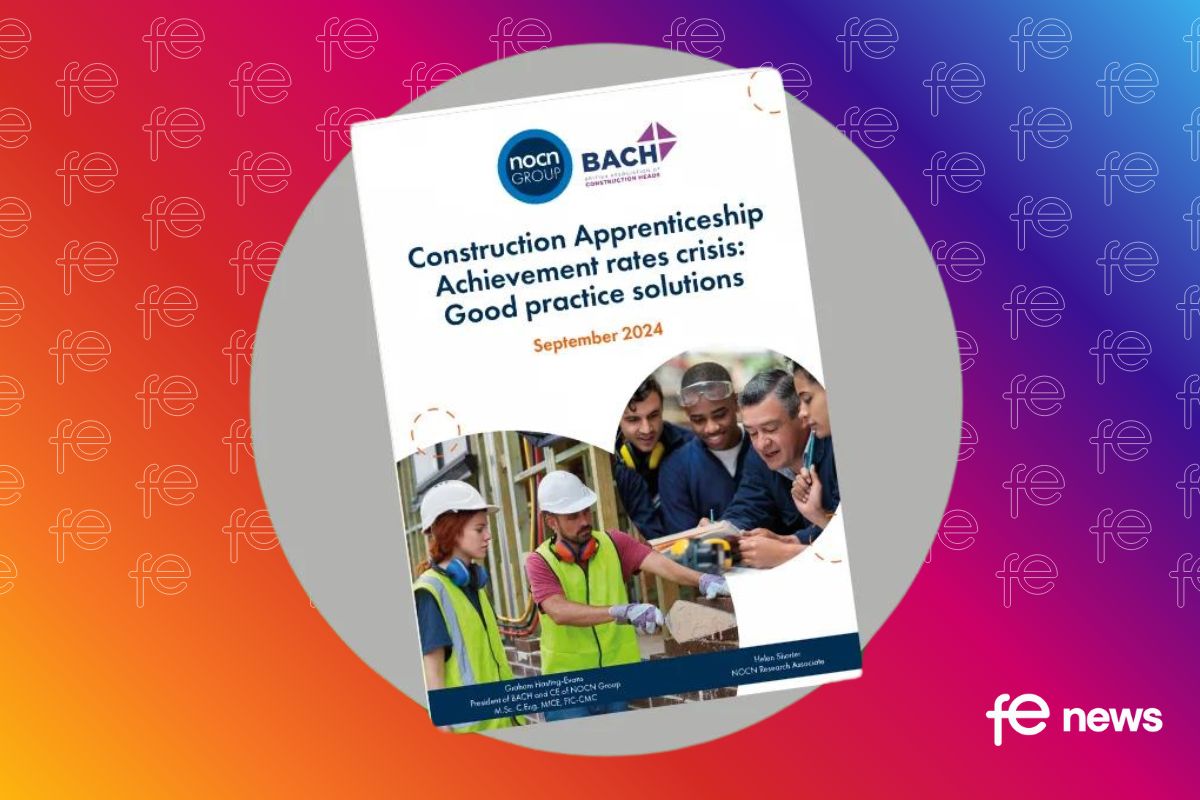New research tackles construction apprenticeship completion rate crisis

A new report from the British Association of Construction Heads (BACH) investigates the reasons behind why 47% of construction apprentices do not complete their apprenticeship.
It makes recommendations for ways in which the Government, colleges, training providers and employers can work together to address the shortfall head on.
The report highlights that, when it comes to completion, construction apprenticeships are still suffering from the impact of the pandemic with the drop-out rate now at 47%. As a result, only 8,620 construction apprentices reached End Point Assessment (EPA) in 2022/23, against the industry need of over 96,000 new staff per year.
The new report is published against a backdrop of huge ongoing demand for construction skills nationally. The Construction Industry Training Board (CITB) estimates that the UK will need an extra 250,000 workers by 2030 and the Engineering Construction Industry Training Board (ECITB) forecasts that the total could be 280,000. The new Government’s ambition to build 1.5 million homes over the next five years is estimated to add a further 150,000 jobs to these figures, making the total skills shortfall 430,000. This equates to an almost 15% increase in the industry’s workforce.
Graham Hasting Evans, President of BACH and chief executive of international skills charity NOCN Group, comments:
“The labour market continues to be challenging for employers and employees alike and high numbers of vacancies coupled with high unemployment rates suggest a severe mismatch in the training for work programme overall. Apprenticeships should be the route to addressing all of this, yet apprenticeship starts are lower for construction now than they were five years ago. The fact that such a high percentage are not completing their apprenticeship programme presents a huge wasted opportunity that must be addressed but solutions to this have been slow in coming forward with so many different parties involved in apprenticeship delivery.”
“These challenges are compounded by reduced investment in training from both employers and Government, as employers seek skilled labour rather than training their own staff, perpetuating the reduction in skilled operatives in the pipeline. The research demonstrates what a complex issue we are dealing with and that Government, academia and industry must work together to address the challenge at various touch points.”
The good practice ideas in the report set out how this can be done from the point of view of the apprentice, training provider and employer, providing an integrated, holistic route to improving achievement rates as a matter of urgency.











Responses